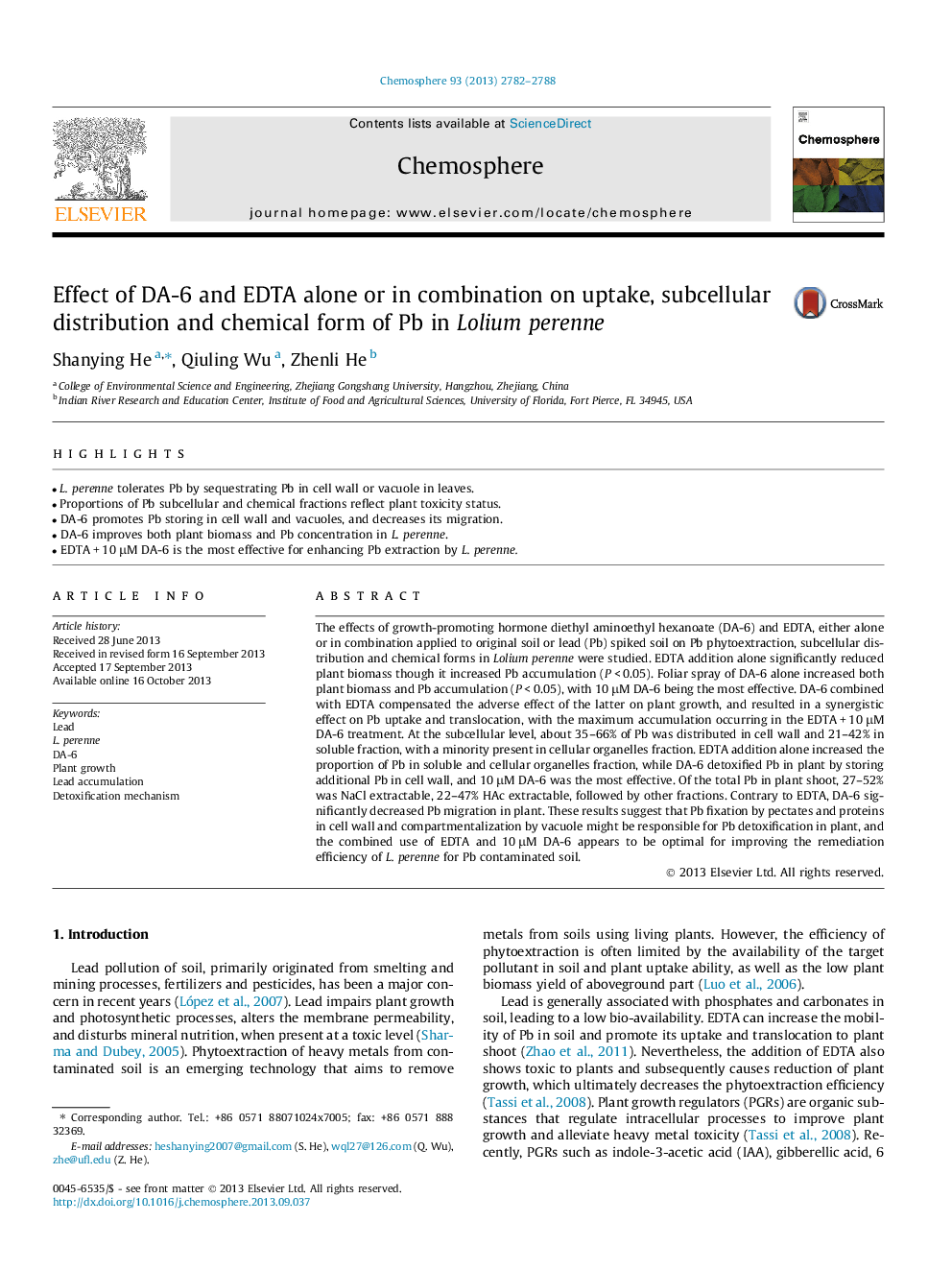| Article ID | Journal | Published Year | Pages | File Type |
|---|---|---|---|---|
| 4409106 | Chemosphere | 2013 | 7 Pages |
•L. perenne tolerates Pb by sequestrating Pb in cell wall or vacuole in leaves.•Proportions of Pb subcellular and chemical fractions reflect plant toxicity status.•DA-6 promotes Pb storing in cell wall and vacuoles, and decreases its migration.•DA-6 improves both plant biomass and Pb concentration in L. perenne.•EDTA + 10 μM DA-6 is the most effective for enhancing Pb extraction by L. perenne.
The effects of growth-promoting hormone diethyl aminoethyl hexanoate (DA-6) and EDTA, either alone or in combination applied to original soil or lead (Pb) spiked soil on Pb phytoextraction, subcellular distribution and chemical forms in Lolium perenne were studied. EDTA addition alone significantly reduced plant biomass though it increased Pb accumulation (P < 0.05). Foliar spray of DA-6 alone increased both plant biomass and Pb accumulation (P < 0.05), with 10 μM DA-6 being the most effective. DA-6 combined with EDTA compensated the adverse effect of the latter on plant growth, and resulted in a synergistic effect on Pb uptake and translocation, with the maximum accumulation occurring in the EDTA + 10 μM DA-6 treatment. At the subcellular level, about 35–66% of Pb was distributed in cell wall and 21–42% in soluble fraction, with a minority present in cellular organelles fraction. EDTA addition alone increased the proportion of Pb in soluble and cellular organelles fraction, while DA-6 detoxified Pb in plant by storing additional Pb in cell wall, and 10 μM DA-6 was the most effective. Of the total Pb in plant shoot, 27–52% was NaCl extractable, 22–47% HAc extractable, followed by other fractions. Contrary to EDTA, DA-6 significantly decreased Pb migration in plant. These results suggest that Pb fixation by pectates and proteins in cell wall and compartmentalization by vacuole might be responsible for Pb detoxification in plant, and the combined use of EDTA and 10 μM DA-6 appears to be optimal for improving the remediation efficiency of L. perenne for Pb contaminated soil.
